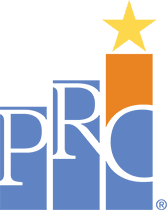Time For Innovation-
As part of PRC’s celebration of Patient Experience Week with the Beryl Institute, we’re publishing a series of four daily blog posts discussing key elements of an excellent patient experience: communication, teamwork, safety, and timeliness.
Those of you who’ve been following this blog series as we celebrate Patient Experience week may recall from Tuesday’s post that I spent a lot of time in the emergency room as a teenager. One of my favorite trips was on Valentine’s Day 2006. I had gone sledding with my friends and, in response to the snow kicked up in my face, I ducked my head and closed my eyes. While effective at keeping the snow off me, this method also prevented me from seeing the metal pole sticking out of the ground, which swiftly knocked me unconscious.
When my mother got home from work and it became apparent I was not going to walk this one off, we hopped in the truck to head to our local hospital. Nearly out of the driveway, she suddenly stopped and silently hurried back into the house. A few minutes later she returned with a deck of playing cards. “We’re going to need these,” she said with a smile. She’d been to the ER a time or two herself.
Like bad airplane food and red tape at the DMV, the slowness of an emergency room is cliché; common fodder for jokes, exasperation, and frustration. But to those in healthcare, those jokes mean something; a patient’s satisfaction weighs heavily on how soon they were checked in, how quickly they were seen, and how long much time was spent in the facility. Personally, after 2006, I started visiting the hospital in a nearby town because even with a 30 minute drive, I could be in and out faster than if I’d visited the emergency department up the street.
These waits aren’t because the staff doesn’t care. Every year, new innovation arrives on the scene to streamline the patient care journey with efficiency in mind. Relatively speaking, we are still on the early end of the learning curve, working toward the goal of care that is as fast as it is safe and reliable. To that end, The Chicago Booth Review cites four improvements to hospital efficiency to look for in the coming years.
Bedside blood tests can all but eliminate the wait for lab results in certain situations. By testing blood themselves, physicians found a significant decrease in wait time, sometimes improving by about a third.
The creation of specialized wings improves the efficiency of hospital beds and reduces capacity strain. Care wings acting as minihospitals dedicate themselves to specialties such as oncology or cardiology. As a result, the teams within these wings are better able to focus on caring for patients while working in a contained area with specialized resources.
Discharging patients in the morning, rather than in the afternoon after morning rounds, has been shown to improve wait times for emergency patients waiting for those beds. This practice takes time to implement, but has significantly paid off in adopting programs.
Reducing readmission rates can be tricky, but saves both time and money in the long run. Calculations, along with clinical and operational techniques, can help healthcare teams predict if or when a patient will return for care, enabling them to prepare accordingly.
Timeliness is a difficult element of patient satisfaction and is often the result of many factors, some of which we’ve discussed this week. This Patient Experience Series has covered the importance of good communication, strong teamwork, and diligent safety, which share one common underlying drawback: Time. It takes time to communicate clearly, it takes time to ask a team member if he’s okay, and it takes time to wash your hands correctly. And when patients complain that you just aren’t moving fast enough, the temptation to cut corners creeps up. How can you maximize both efficiency and effectiveness? Can the two coexist?
With time, yes. Practice can never make perfect in healthcare, but it can make for excellence, something each of us strive for. The more you practice communicating with “I” statements, the less effort it will take. And while the first few team huddles and debriefs may seem to drag on as everyone scrambles for their footing, with practice you’ll find a routine and get through each point efficiently. And as hospitals and the healthcare system evolve to fit the fast-paced demands of the 21st century, we see stronger models for efficiency that simply didn’t exist in decades past.
For more tips and discussion about creating an environment of healthcare excellence, be sure to register for the May 20-22 Excellence in Healthcare Conference. Held at Wild Dunes Resort in Charleston, South Carolina, this conference unites hundreds of healthcare experts and promises to help healthcare professionals relax, refocus, and recharge.

